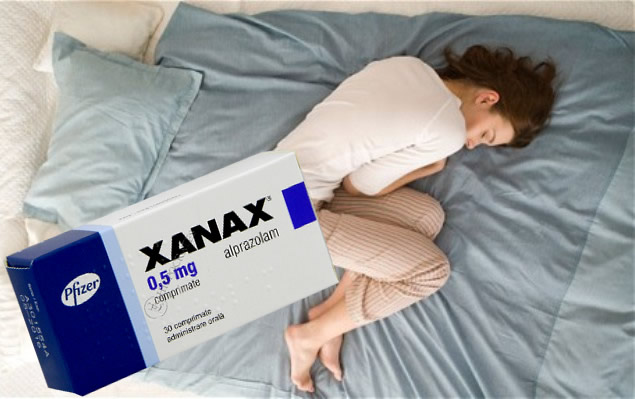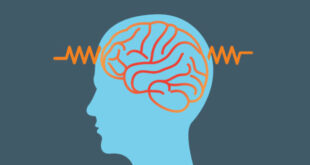Learn what are Xanax Withdrawal Symptoms, how long Xanax withdrawal symptoms last and why first few hour of quiting Xanax (alprazolam) should be critical monitored by the physician.
Xanax (alprazolam) is a benzodiazepine class of drugs that reduce the over-activity in the brain and central nervous system by mounting the presence of the inhibitory neuron gamma-amino butyric acid, or GABA.
GABA and chloride ions are natural relaxing agent of the body. A alprazolam similarly affects the mind like that of alcohol. When GABA binds to a nerve cell receptor, it actually is like opening a door so that chloride ions are allowed to move into the nerve cell, contact a receptor in the cell, slow the activity of the cell, and as a result gives a calm feeling.
Xanax activate the pleasure cells in the brain and make people feel good by decreasing abnormal excitement in the brain. Most frequently Xanax is prescribed as a tablet. Xanax (alprazolam) is used for the treatment of panic disorder, fear of open spaces (agoraphobia),sometimes depression, cancer treatments (for nausea and vomiting).
Xanax is approved to treat generalized anxiety disorder (GAD). CNS depressant like Xanax can help reduce anxiety, relax muscles, and stop epileptic seizures. Xanax may include in treatment of insomnia, agitation, and premenstrual dysphoric disorder (PMDD).
Xanax is also considered to be addictive especially when taking high doses for longer than a month and can lead to dependence. Xanax indicates that taking the drug GABA acts as a kind of natural sedative in the brain; it slows down functions and muting reactions to stress. Xanax actually influence the production of GABA with time, and the brain may stop making it without the presence of the drug.
Xanax addiction is an increasing problem for many individuals from the past few years. In almost 10 % of all emergency department people sought treatment for benzodiazepine abuse and rates have only been rising in the past couple of years.
Xanax Withdrawal Symptoms
Long term use of Xanax (and other benzodiazepines) is not safe. This is not meant to scare people but actually it is addictive and is hard to quit. Withdrawal symptoms are the major drawbacks associated with Xanax:
Withdrawal Symptoms of Xanax:
Xanax will work by slowing down the central nervous system’s activity and, implicit, of the substances that may be unbalanced. Xanax withdrawal symptoms start when Xanax intake is ceased and the effect of Xanax has worn off. These first few hours are critical, so it is recommended to consult a physician to taper medication and then monitor withdrawal symptoms. Xanax should not be stopped abruptly; vital signs like blood pressure, respiration levels, heart rate, and temperature must be closely supervised during withdrawal stage. benzodiazepine withdrawal may be fatal without professional assistance during Xanax detox.
Some warning signs of Xanax withdrawal are: Headache, Blurred vision, Muscle aches, Tension in the jaw and/or teeth pain, Tremors, Nausea, Vomiting, Diarrhea, Numbness of fingers, tingling in arms and legs, Sensitivity to light and sound, Alteration in sense of smell, Loss of appetite, Insomnia, convulsions, Cramps, Heart palpitations, Hypertension, Sweating, fever, Impaired respiration and mood swings. Hallucinations, Disorientation, Confusion, Trouble concentrating, Non-cohesive thoughts and Memory problems are also frequent psychological withdrawal symptom of Xanax.
How long do Xanax Withdrawal Symptoms Last?
Xanax withdrawal symptoms differ from person to person. Many health factors contribute to the withdrawal symptoms. A Xanax Reducing the dosage helps lessen and may even put off common symptoms experienced during withdrawal. A quick drop of Xanax may trigger the adverse effects and is not recommended by most healthcare professionals. Withdrawal symptom normally emerges several hours after your last dose of Xanax.
Benzodiazepine withdrawal held in two stages:
- Acute phase – lasting 7 days to 90 days
- Post Acute Withdrawal Syndrome (PAWS) – in some cases, lasting up to 2 years
People taking Xanax for several months and in high doses is prone to experience more withdrawal symptoms that last longer than those taking smaller doses for a short time. The patients having doses of 4 mg/day or higher of Xanax for longer than three months are likely to become dependent on the drug and therefore more likely to experience more uncomfortable withdrawal symptoms than those taking smaller doses for less time.
The detoxification process for Xanax typically includes a gradual reduction in dosage. Xanax addiction can be devastating, if you allow it to overtake your life! As soon as you recognize your addiction, it is imperative to seek help immediately or if you want to treat yourself swiftly then stretched withdrawal is suitable and can last for several weeks, months, or even years without being addressed by a mental health professional.
 Health & Care Information
Health & Care Information 


